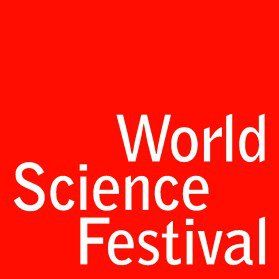
Begun in 2008 by Columbia University Physicist Brian Greene, the World Science Festival has burgeoned from an intimate cluster of science panels to a truly integrated mega-event melding culture, science, and the arts. Those lucky enough to make it out to New York City to the over 40 events this year will have a chance to learn about a variety of current science topics, go stargazing with NASA Scientists, discuss Faith and Science, and find out why humans commit violent crimes. Those not lucky enough to be there can browse the full list of events here and watch a live-stream of selected events here. ScriptPhD.com is proud to be at the festival, and will be bringing you coverage through Sunday through the eyes of talented science writers Jessica Stuart and Emily Elert. Our blogging will include event summaries, photographs, interviews and even videos of the street fairs and science literally spilling over into the streets of New York.
OPENING NIGHT GALA — June 2, 2010
The 2010 World Science Festival began tonight with a gala celebration at Avery Fisher Hall in Lincoln Center. The grand venue played host to a number of luminaries, among them Alan Alda, Yo-Yo Ma, Kelli O’Hara, and the star of the evening, legendary physicist Stephen Hawking.
Alda started off the evening. “It seems strange that with how much we know, how much is known about science, so little reaches us, the general public…” He continued, “Science is still obscured by a black hole of misunderstanding, and when light tries to escape, it gets drawn back in.” The World Science Festival’s goal is to “cultivate and sustain a general public informed by the content of science, inspired by its wonder, convinced of its value, and prepared to engage with its implications for the future.” Judging by the line up they have this coming week, they’ll do a great job of that again this year.

The opening gala opening brought out a wide variety of people. From Nobel Prize winners to Broadway stars, the house was packed. Musical numbers all tied into the science theme. Broadway singers Rebecca Luker and Kelli O’Hara charmed the room, with “When the Sea is all around Us” and “Stardust,” respectively. Yo-Yo Ma and the Silk Road Ensemble played a lively Persian-inspired version of the Icarus story.

Undoubtedly, the highlight of the evening was honoree Stephen Hawking.
“Back in 1965, when I first saw the skyscrapers of Manhattan, I had been recently diagnosed with ALS and had a 2 year life expectancy. Therefore, no one is more surprised or delighted than myself to be back here 45 years later…”
Hawking has long been interested in bringing science to the public. Along with countless scientific publications, he’s written several books for the layperson, including his bestseller A Brief History of Time, and the updated A Briefer History of Time. His introduction this evening featured a clip of him from The Simpsons (He’s appeared in several episodes – tonight’s clip was from the Season 16 episode “Don’t Fear the Roofer”).
Those who know Dr. Hawking spoke of his wit and humanity. His sense of humor came through in his brief remarks.
“For my honeymoon in the 60’s, I brought Jane to a physics conference here in New York. It seemed to be both a logical and romantic destination. However, I have since learned that logic and romance do not always go together as well as I once believed. Some things cannot be solved by algebra, I am sorry to say.”
PIONEERS OF SCIENCE — June 3, 2004
Early this morning, just a block away from Times Square, a group of 21 lucky middle and high school students gathered to chat with astrophysicist Dr. James Mather. They were joined via video chat by students from Florida, Kansas, and students from two schools in Ghana who traveled more than 3 hours from their rural towns to participate.
As the students prepared for the chat to begin, they wrote out and practiced the questions they wanted to ask with their friends. One young man approached Dr Mather in awe, “Oh my god, it’s such an honor to meet you!” “It’s an honor to meet you, too,” he replied. Dr. Mather is by all accounts a brilliant scientist. He’s the recipient of a 2006 Nobel Prize in physics, and is the Senior Project Scientist on the James Webb Space Telescope, slated to launch in 2014 (which is currently on exhibit in Bryant Park and which we will be bringing you video coverage of). He’s also a fantastic communicator, easily bridging the gap between high level NASA science and the inquiries of young students. As question after question came his way, he distilled his answers to clearly explain how the universe, and the tools we’ve built to understand it, work.
This group of bright students from around the globe kept him on his toes, asking questions such as “How is it possible to have an infinite amount of space? What contains it?” and “What does COBE do exactly?” They asked about how cosmic microwave background affects society, and how scientists see back in time to look at dust from the big bang. He answered many questions with more questions, and did not shy away from saying he did not know some answers, an important aspect of being a good, inquisitive scientist.
Dr. Mather explained to the students the mysteries of dark matter and dark energy, how we could use the presence of oxygen to detect other life in space, and the challenges they faced when they had to redesign the new telescope after the Challenger explosion, reducing the weight by half and finding a new rocket to send the now foldable telescope up on.
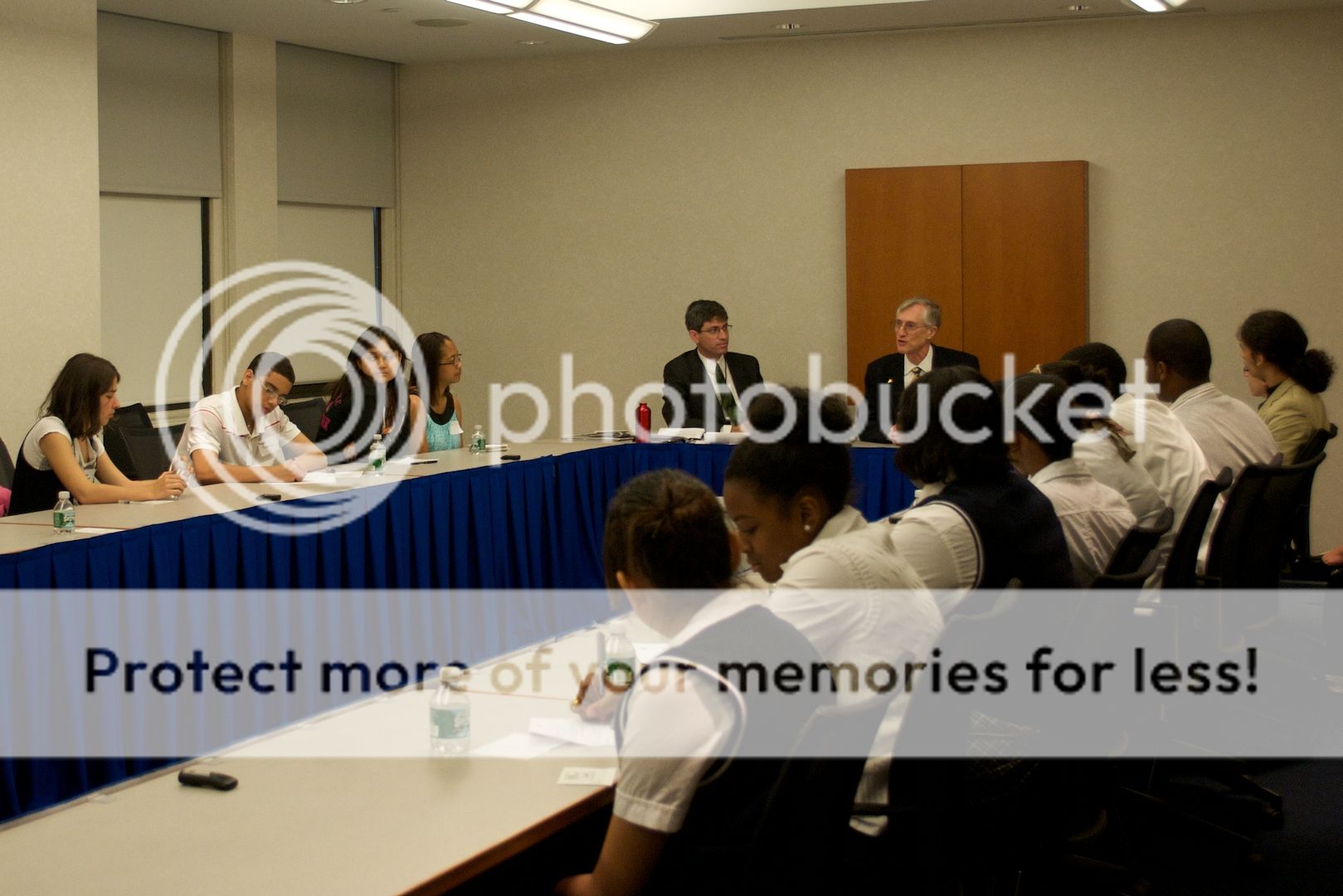
When asked “Did you ever think you’d be an astrophysicist when you were young?” Dr Mather replied “I didn’t even know what one was…” Towards the end, the conversation turned to how students could become scientists themselves. “You find something that interests you, and you follow it…Some people want to solve crossword puzzles all day long, and so they become experts at crossword puzzles… some people become fascinated with science, and they follow some special interest.” Mather continued, “Einstein wanted to know about compass needles. I wanted to know about stars… You just have to follow what interests you, and pretty soon you are led to, ‘I really want to know more math, because math is part of science’, and then ‘I need to know other parts of science that relate to my part of science’, and so, you just follow what you want to do, and try to get people to help you, and I see that everybody here already has had some help, because you got here. My impression is that there’s a lot of help available for people who want it, and if you say ‘I want to study science,’ somebody will say ‘I want to help you study science.’ So perhaps that’s the most important thing to know, that people want to help you if you want to do this.” He finished by telling the students to look him up and feel free to email him with more questions.
As the talk concluded, the remote locations signed off, and the students in New York swarmed the front of the room, buzzing with excitement and basking in the attention of this true Pioneer of Science.
OUR GENOMES, OURSELVES — June 3, 2010
Few medical issues are fraught with as much controversy as genomic testing. Will it lead to designer babies? Could knowing what’s in your DNA hurt your chances of getting insurance or a job? What would you do if you found out you had BRCA1, the “breast cancer” gene?
Our Genome Ourselves (https://www.worldsciencefestival.com/our-genomes-ourselves) tackled all of these questions and more.
Panelists included Francis Collins (Geneticist, Physician, & Director of the NIH), George Church (Molecular geneticist), and Robert C. Green (Neurologist & Epidemiologist), with moderator Richard Besser (ABC News Senior Health and Medical Editor, former acting director of CDC and Physician). All experts in the field of genomics, these four men offered both broad medical and policy knowledge, and a truly compelling panel presentation.
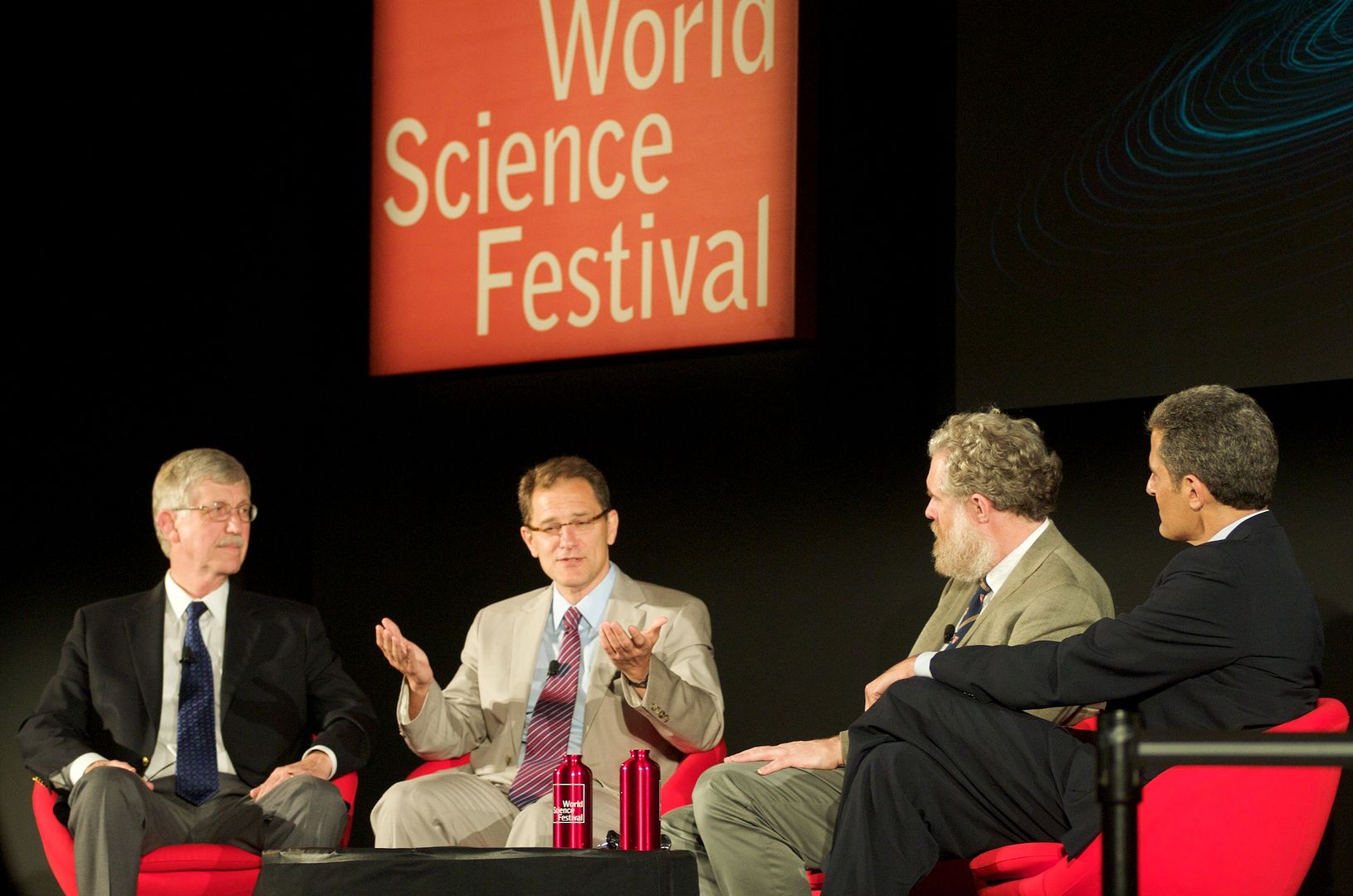
The biggest takeaway, repeated by all of the panelists, is that very very few genes are deterministic – that is, there are not many conditions that can be indicated or eliminated by the presence or absence of one single gene mutation. Each person has some 6 billion genes in each cell. The vast majority of traits and predispositions are caused by a combination of factors, many of which are not fully understood. We are still in the very early stages of being able to interpret what a sequenced genome might indicate – even if you were fully sequenced tomorrow, it would be very prudent to revisit the interpretation next week and next month and next year. The sequence of letters should stay the same (barring any typographical errors), but what they might indicate for your future could be drastically different, based on new information being found daily.
Many people think that if they find out what their DNA says, they’ll have a road map for the diseases they’ll get and the life they’ll live, but in almost every case, that couldn’t be further from the truth. Without taking into account environment and other factors, we have a huge over-expectation of what genomics can tell us. There are other issues, too, beyond interpretation. Many emotional, ethical, and educational factors come into play. What about testing our children? At what point do they have the right to know they’re likely to get Parkinsons? Dr. Green wondered if it’s wise to give people results that say they have a 40% greater chance of a disease? What if that actually means their overall odds go from 1% to under 2%? A very important side question – do people understand statistics well enough to truly understand what risks indicated by genetic markers are saying?
Dr. Collins pointed out that typically, when considering what we want to know about our own personal genomic sequence, we consider three things:
1. What kind of risk is it able to provide you with?
2. What’s the burden of the disease?
3. Is there an intervention?
The panelists agreed that as genetic testing becomes more prevalent, we need to provide proper training to medical professionals, whether that be physicians, physicians assistants, nurse practitioners, or others, to properly explain the meaning of the results to patients. We also need to improve and implement a solid electronic medical record system, so that the results can be applied. Minorities and other under-served populations need to be recruited to donate their DNA, which likely means dealing with the practicality of being able to promise privacy to those who are more skeptical than the original volunteers of interested researchers.
Some of the bigger questions can be easily answered. For now, the idea of being able to go to a geneticist and selecting a tall, blue-eyed, muscular son, with musical abilities, athletic prowess, and above average intelligence, is out of the picture. Too many factors go into each one of those traits for it to be easily selectable – it’s currently impossible to optimize an embryo for those types of genes. The Genetic Information Nondiscrimination Act of 2008 provides a legal framework so that Americans cannot be discriminated against based on genetic information, as it pertains to health care and employment. As for what individuals will decide to do if they’re shown to have BRCA1, that will remain a personal decision.
The first draft of the human genome sequence was completed on June 26, 2000. Twenty years later, we’ve come so far, yet still know so little. It will be fascinating to see what science achieves in another couple of decades.
Follow the World Science Festival on Facebook and Twitter. All photography ©ScriptPhD.com. Please do not use without permission.
Jessica Stuart is a writer, photographer and videographer living in New York City. Find her on her personal blog, and Twitter.
*****************
ScriptPhD.com covers science and technology in entertainment, media and advertising. Hire our consulting company for creative content development.
Follow us on Twitter and our Facebook fan page. Subscribe to free email notifications of new posts on our home page.
]]>
During a recent trip to New York City, I had the pleasure of befriending exciting new author Ernesto Robles, whose debut novel The Malthusian Catastrophe is a ScriptPhD.com recommended pick. Smart, topical, fast-paced and decidedly engrossing, this biomedical thriller drives at the roots of our cultural obsession with the “fountain of youth” and the perilous socioeconomic repercussions of actually finding and disseminating it. In a year when the Nobel Prize for Medicine and Physiology went to a team of researchers for their discovery of how chromosomes are protected by telomeres and the enzyme telomerase, essential biological components of the human aging machinery, and a cultural era that has anointed juvenescence as sacrosanct, Malthusian’s overarching themes are especially germane. ScriptPhD.com’s discussion includes a review of the book, the biology and ethics of current aging research, and a one-on-one interview with Mr. Robles. For full content, please click “continue reading.”
A Malthusian catastrophe, originally postulated by the 18th Century economist Thomas Malthus, proposes that “the power of population is indefinitely greater than the power in the earth to produce subsistence for man. Population, when unchecked, increases in a geometrical ratio.” That is, when a population grows beyond sustainable levels, it will force a return to primitive, subsistence-based living. Highly influential on Charles Darwin’s Natural Selection work, the theory has caused a divergence of opinions on applicability to modern-day conditions. A recent New York Times Science piece argued that post-Industrial Age conditions and improvements to the food supply chain had rendered the theory obsolete, while the Wall Street Journal counterargued that high global living standards (a car for every household, for example) would create deleterious, and eventually catastrophic, economic and environmental crises. Such is the backdrop against which the events of The Malthusian Catastrophe take place.
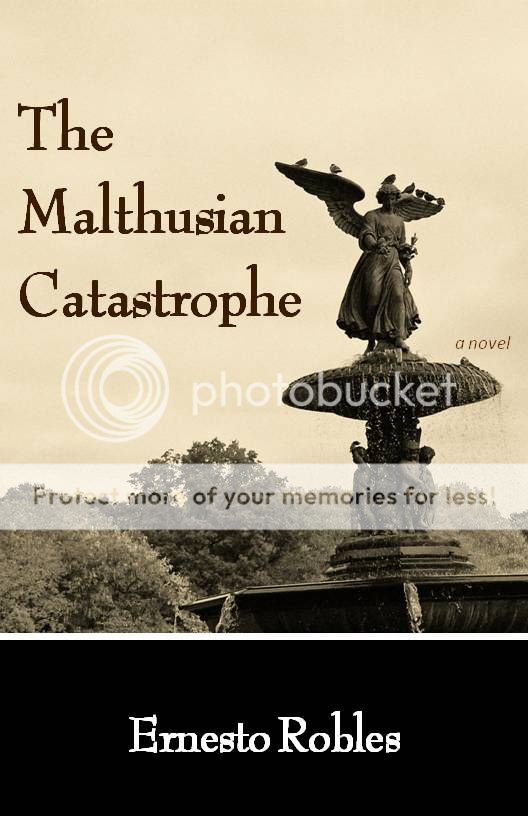
Michael Jeffs is a bright, ambitious former Wall Street broker caught in the web of steadily rising unemployment and economic strife. Desperate for a job, he goes on a last-ditch interview at the mysterious but quickly growing company Aseso Neutraceuticals, sellers of Sinsen, an herbal supplement that is believed to arrest, if not reverse, aging. Headed by passionate brilliant Stanford scientist David Oaks and reclusive Japanese businessman Toshiro Tanaka, Aseso is on the cusp of a global craze. Michael doesn’t know much, but he knows he needs a job, so he accepts Aseso’s offer to run their business strategy and moves to New York City with his compassionate artist girlfriend, Caroline. A fancy apartment, money in the bank, and being a part of “the fountain of youth”—it all seems too good to be true.
With Michael’s help, it doesn’t take long for Aseso to take off. Public acess to Sinsen becomes difficult for all but the richest and most well-connected, a situation that is only exacerbated when scientific studies reveal that Sinsen’s two market rivals, Carotegen and Reversetrol, do not possess anti-aging properties, while Sinsen does. This shocking revelation is based on a scientific deception so grand, that it has far-reaching consequences for Aseso, Michael, and the entire globe. Aseso’s rising fortunes perfectly mirror the spiraling penury and abject living conditions of New York City and the rest of the world, scenes of which represent some of Mr. Robles’s strongest writing throughout the book. Sinsen becomes more than just an anti-aging pill; it bestows political capital, economic force, and ultimately, total domination. All valuable land resources, manpower, government coups, and even acts of terrorism are perpetrated towards production and acquisition of Sinsen. Unfortunately, public zeal and corporate greed are thwarted and toppled by the greatest scientific property of them all—shocking unpredictability.
With a crisp, approachable writing style, Mr. Robles crafts together a stylish novel whose gripping plot points are far outweighed by the modern-day dilemmas they weave together. In the form of character archetypes, he is asking us, the reader, to make a choice about life extension. While Michael Jeffs succumbs to the inertia of a populist tidal force both in taking Sinsen and aggressively marketing it (despite the meek protests of his inner doubts), his girlfriend Caroline is a stalwart moralist who adamantly opposes what she feels is a social experiment gone awry, her graying hair a physiological manifestation of both her indignation and their fraying relationship. In the middle is Dr. Joanna Hochberg, ever the hypocrite, vociferously impugning Sisen use by the general population even as she’s taking it on the side. There is the idea of corporate greed in the dawning of an age where medical and biotechnology advancement represents the future of power, an inequity manifesting itself in the third world before our eyes. In Mr. Robles’s hands, first world citizens are those that can take Sinsen irrespective of geography, and thereby outlive and outlast, and the third world is comprised of those that can’t—with no in-between. Furthermore, the book delves into the price of chasing immortality with unproven, theoretical remedies. [The United States market for supplements (herbal, food and drug)—which are exempt from FDA regulation—exceeded $25 billion in 2008.] Some people, due to a cruel, unexpected twist of biology, even paid the ultimate price.
Finally, and most importantly, is the paramount question of ethics and sustainability. Should we live forever? Can we? The Malthusian Catastrophe closes by invoking a very famous, oft-repeated psychological experiment by John B. Calhoun that tested the limits of population density and sustainability. Building the foundation for a generation of scientists, Calhoun hypothesized that there exists an innate upper limit to the number of meaningful social interactions that an individual could cope with before stress became a factor. In a habitat that could uncomfortably house 5,000 rats, the population always leveled off at 150, and never exceeded 200, incurring extreme behavior including exclusive homosexuality, high (>96%) infant mortality rates, psychological withdrawal, and male hyperaggression. The experiment was named as one of 40 Studies That Changed Psychology, and Calhoun’s rats have come to serve as a model for urban crowding and decay, civil unrest (including the Watts and Newark 60s riots), and sustainable population growth models. All of this begs the question of whether it’s ethical to fight the natural biology of aging and generational turnover, or whether technological advancement represents a quantum leap in human evolution and survival of the fittest. Professor Peter Singer, an Australian philosopher and Professor of Bioethics at Princeton University, has engendered enormous controversy for his claims that animals deserve to be treated like humans, and his pro-euthanasia stances. In the early 90s, Dr. Singer argued against radical life extension and the production of an anti-aging pill as developing the drug would fail to achieve the greatest sum of happiness over time. On the opposite side of the bioethical spectrum is another Aussie, Dr. Russell Blackford, Professor of philosophy and bioethics at Monash University. His recent piece in the “Institute For Ethics and Emerging Technologies” blog offers a diametrical proposal: that such a pill will be produced anyway and, all other factors being equal, as long as the expanded lives end well, they are morally acceptable.
The aforementioned concepts were beautifully assembled in a recent TED Talk by UCLA Professor and scientist Jared Diamond, author of Guns, Germs and Steel: The Fates of Human Societies and Collapse: How Societies Choose to Fail or Succeed. Please ignore the awful combover—he’s really a very smart man!
The Biology of Aging: Source for a Cure?
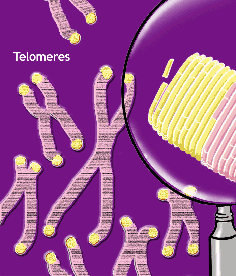
Embedded within The Malthusian Catastrophe is some fairly sophisticated and cleverly-researched biology. The supplement sinsen is derived from the root of the actual Chinese Astragalus plant, and acts as an activator of telomerase, an enzyme that plays a key function in protecting telomeres and has been implicated in the canon of anti-aging research and drug development. Let’s first back up and talk about what telomeres are and why they’re so critical. The 2009 Nobel Prize in Medicine was awarded to three American researchers, Drs. Jack Szostak, Carol Greider and Elizabeth Blackburn, for discovery of and contributions to the field of telomere research. The DNA that codes your genes (what makes you you) goes through a series of complex folding and packaging steps to condense its volume, protect the DNA, and allow for simpler replication of genetic material during cell division, an ever-ongoing process during our lives. Long strings of DNA are first scrunched together like a wad of paper in structures called “nucleosomes”, then combine with and around proteins called histones to form “beads-on-a-string” (sort of like a necklace with a bunch of charms on it), then into dense ordered fibers, and finally into the familiar compact X-shape by which we can identify chromosomes. At the very tips of these structures are ordered, noncoding, repetitive sequences of DNA that act as “caps” to the chromosome (see picture). These are called telomeres. Blackburn has compared these ends to the protective anglets at the ends of shoelaces. When a cell divides, this folding process reverses itself and DNA unwinds to copy for the new cell. In order to protect the more important parts of your DNA (those that actually code for proteins), the replication process “snips” the very ends—the telomeres. Eventually, over the course of enough cell divisions, the telomere frays to a dangerously short length, endangering these important regions of DNA. Scientists can tell how old a cell is based on its telomere length, akin to the rings of a tree trunk. Telomeres have thus been implicated in human aging, cancer, and many of the so-called “aging diseases”.

Luckily for us, biology has devised a very clever, evolutionarily conserved mechanism for decelerating chromosomal shortening in the form of telomerase, an enzyme that elongates telomeres by adding a specific DNA sequence common to all vertebrate animals (TTAGGG). Activation of this enzyme is considered the Holy Grail of anti-aging research. Interestingly, research has shown that socioeconomic status correlates to telomere length, with poorer people exhibiting shorter telomeres than the rich. New York City based TA Sciences is attempting to invent itself as the real-life Aseso Neutraceuticals, marketing a pill called TA-65, an extract of the same herb in the book, Astragalus, a plant has been used for centuries by Chinese herbalists for medicinal purposes. TA Sciences concentrates a low-level extract in the form of TA-65, which they propose is a telomerase activator. Recent media attention has included Newsweek and the Los Angeles Times. (Los Angeles? Interested in eternal youth? Color me stunned!) But before you rush to the TA Sciences website to put in your order for this super-supplement, be aware that several challenges currently face telomere research, including lack of an appropriate animal testing model, evidence that telomere lengthening may increase cancer cell proliferation, and of course, the risk of taking an unknown substance that has not been approved by the FDA.
One thing you can do fearlessly, and often, is drink red wine. The grapevine produces one of the highest naturally occurring concentrations of resveratrol in the skin of the grape of any food or herb. What is resveratrol and why is it a key to aging and disease? Numerous consensus studies of late (a nice collection can be found here) have found that calorie restriction diets in mice, rats, and other animals drastically expand their life spans. One important biochemical pathway activated by these low-calorie diets are the enzyme family of sirtuins. Sirtuins regulate key components of metabolism, cell defense and reproduction, and one of the most powerful sirtuin activators is… you guessed it! Resveratrol. Indeed, a landmark 2006 study found that the physiology of obese mice whose high fat diet was supplemented by resveratrol mirrored that of a healthy mouse and significantly extended their lives compared to placebo groups. Naturally, the market and demand for resveratrol nutritional supplements sprouted virtually overnight, with production coming from both chemical synthesis and extraction from Japanese knotweed. To date, benefits to humans of resveratrol supplements are unproven and the collective field of anti-aging research has advanced modestly. Resveratrol can also be found in blueberries, peanuts, and various other plants. But here at ScriptPhD.com, we think red wine is the best solution. Salud!
We are clearly on the cusp of grasping the futuristic science imagined by Mr. Robles. Research will undoubtedly unlock the biological keys of aging, disease, and the pharmaceutical industry will likely follow suit with a panacea of one sort or another. It is not inconceivable that within our lifetimes, we will be offered the same choice as the characters of The Malthusian Catastrophe. Age naturally, or defy Mother Nature? Which will you choose?
Interview with The Malthusian Catastrophe author Ernesto Robles:
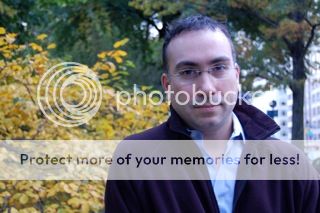
ScriptPhD.com: Your background professionally spans economics and business, and yet the book that you wrote is in essence a biomedical thriller. What prompted your interest in science as a backdrop for your first novel?
I started off wanting to write an economic oriented non-fiction book catered to people who do not know much about economics. After a bit of research, I concluded that many in my target audience would prefer to learn something if it were embedded within an entertaining story. Also, I find it helpful to extend a scenario to its logical extreme to better illustrate a point. Economics is basically the study of the behavioral interaction between those that demand and those that supply. To that end, I decided to write a novel about something many people would demand (extended life) and those that supply (profit motivated companies). When I started researching the science of aging, I came across many scientists doing serious research on the subject. I decided to base the science in the book on one particular scientist Dr. Elizabeth Blackburn, UCSF. Coincidently she won the Nobel Prize in Medicine this past October, one month before the book was published.
Science has the potential to make linear trends go, all of a sudden, parabolic… but then again so does human behavior… which makes for an interesting story.
SPhD: One of the ways that Aseso Neutraceuticals is able to execute the (unnamed) Grand Deception that sets off the key chain of events is through marketing Sinsen as a supplement, not a drug, thereby absolving it of the FDA regulatory oversight that all other drugs are subject to. Is this book at all a commentary on the hundreds, if not thousands, of nutritional supplements being consumed without any clear knowledge of effects or safety, and would you support FDA approval of nutritional supplements?
ER: To answer the question I should shed light on the situation. Right now the responsibility of the safety of a new supplement rests with the manufacturer and only after the product hits the market, and is presumably consumed by people, does the FDA assume some responsibility. I say “some” because the FDA is responsible for the safety of the product; which is to say that it is responsible for the product not causing you any harm; but it certainly does not opine on the efficacy of the product. Having each supplement pulled from the market to undergo clinical trials seems a bit impractical. People should do their own research and consult with their primary doctor. This situation is like going to church. The structural engineer of the municipality that certified the church as “safe” did not make any claims about the efficacy of that church towards entry to heaven. As long as people truly understand the analogy the current practice seems the most practical given the limited resources available to the FDA.
The commentary in the book was more to say that the FDA like many governmental agencies is a political institution where some of the actions only seem logical from a political perspective. Much of what is studied and approved at the FDA is driven by pharmaceutical companies wanting to bring a new drug to market. If a disease has not yet been classified, that would either be prevented or cured by this hypothetical new drug, then the
FDA just might classify a new disease solely to have the new drug approved. I am not saying this is the right or wrong way to do things, I just think people should be aware of how things in Washington DC get done. If someone is trying to sell a solution it helps that a problem exists.
SPhD: Before the climactic revelation that is the novel’s denouement, Sinsen engenders a very strong two-sided debate. There are those that feel it’s a miracle pill and that everyone should revel in its anti-aging benefits (such as the novel’s protagonist Michael Jeffs), and there are those who feel it’s messing with God or Mother Nature, and that people should age naturally as the order of the universe dictates (such as Michael’s girlfriend Caroline). When all is said and done, what side of the debate do you fall on? Would you take Sinsen?
ER: I would probably fall on the side of a third character, Dr. Joanna Hochberg. I am a selfish person like anyone else (perhaps more so) so it would be hard for me to resist taking Sinsen however the moral intellectual inside of me (if there is one…a big if) would have to admit to the obvious social consequences that would result. I am a huge carnivore. If the US outlawed meat I might be tempted to follow my roots back to Mexico. If we lived in the world of The Malthusian Catastrophe and the US outlawed Sinsen you can bet my Spanish would improve dramatically.
SPhD: There are many thematic elements at play in this novel, including the vain pursuit of endless youth, greed, deception, and biomedical ethics, but at its heart, this book is an economic cautionary tale. The long-term ramifications of continuing to supply Sinsen to an expanding client list are potentially devastating. What is the one take-away point you want people to absorb from reading this book?
ER: The big take away should be something I call “Rolling the Film Forward”. I know someone who has lived in San Diego for most of his life. For the first house he bought he had to put ten percent down. For the second house he bought, in 2002, he didn’t have to put any money down. Finally, for the last house he bought in 2005 the bank gave him 10 percent on top of the value of the house. This is a classic case of people (in this case banks and the capital markets) not Rolling the Film Forward. This scenario was obviously not sustainable and therefore most likely reversible. Rolling the Film Forward, one could have predicted the film would have a bad ending. There is a good book, Devil Take the Hindmost (Edward Chancellor), that gives a pretty good historical account of this type of thing happening again and again. One other life lesson I would like to share is the following: If you ever find yourself scratching your head wondering why an event or change took place that seemed contrary to logic or societal benefit, then go find out who stood to profit the most from that change. More often than not you will discover that they had something to do with it.
SPhD: Any chance we will see “The Malthusian Catastrophe” head to a movie theater in the future? It would certainly make for a very gripping cinematic experience.
ER: Many people ask me that. I haven’t had any serious discussions but would be open to it.
SPhD: What are some of your future projects that we can look forward to?
ER: I am currently working on my second novel. The story is based on an old Wall Street urban legend. Hopefully people will react to it as positively as they have to The Malthusian Catastrophe. I’ll be sure to send you an advance copy.
~*ScriptPhD*~
*****************
ScriptPhD.com covers science and technology in entertainment, media and advertising. Hire our consulting company for creative content development.
Follow us on Twitter and our Facebook fan page. Subscribe to free email notifications of new posts on our home page.
]]>